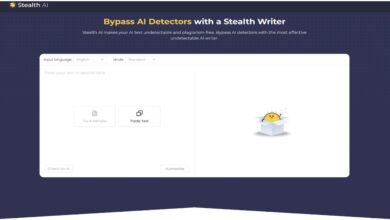Blogger Robot.txt XML sitemap generator [Updated] – Just 1 Click
Robot.txt XML sitemap generator for Blogger to index posts and pages in webmasters
Are you a blogger looking to boost your website’s visibility and rankings on search engines? If so, then it’s time to unlock the power of robots.txt. In this comprehensive guide, we will delve into the world of robots.txt and how it can help you achieve blogger success. Robots.txt is a small but mighty tool that allows you to control how search engines crawl and index your website. By instructing search engine bots on which pages to access and which ones to exclude, you can fine-tune your website’s visibility and improve its chances of appearing higher in search results.
This guide will walk you through the process of creating and optimizing your robots.txt file, understanding the different directives, and avoiding common pitfalls. Whether you’re a beginner or an experienced blogger, this guide will provide you with the knowledge and tools you need to make the most of robots.txt. Don’t let this small but powerful file go unnoticed. Unlock the power of robots.txt today and watch your blog soar to new heights of success.
Let’s generate a robot.txt XML sitemap for your Blogger blogs. The robot.txt sitemap will help Google, Bing, Yahoo, Yandex, Baidu, DuckDuckGo, and other web crawlers to index your site easily and smoothly.
Steps to create robot.txt sitemap:
- Enter your domain name in the textbox provided without http:// or https://
- Press the Generate robot.txt XML sitemap generator button
- What’s all, our tool will instantly generate your sitemap
- Copy the generated robot.txt XML sitemap
Easily generate XML sitemaps for your Blogger blogs for better SEO
Paste the URL of your Blogger blog
How to Add a Robot.txt XML Sitemap in Google’s Blogger blog?
Before you learn How to add a robot.txt XML sitemap to Google’s Blogger blog, you should first know what a sitemap is and why we need to add an XML sitemap to our blog.
What is a sitemap and why do we need to add this to a blog or website?
Robot.txt XML Sitemap: A robot.txt file instructs search engine crawlers which pages or files they can and can’t request from your site. For search engines like Google, Bing, and others to crawl your site more accurately, read this file. A Robot.txt file notifies Google, Bing, and other search engines which pages and files are essential to your site, as well as providing useful information about them: The page was last updated, for example, when the page was last updated. How many times has it been modified, and are there any other languages available?
Sitemap: A sitemap is a file that contains information about your website’s pages, images, and other files, as well as their relationships. Search engines like Google read this file to help them crawl your website more intelligently. Sitemaps tell Google which pages and files on your site are relevant, as well as provide useful information about these files: For example, when it comes to websites, how often the page was last updated and when it was last updated Any alternative language version of a page was modified.
Benefits of XML Sitemap: The XML sitemap file acts as a directory for all of your website’s or blog’s web pages and posts. These sitemap files can be used by Google, Bing, Yahoo, Yandex, Baidu, DuckDuckGo, and other search engines to find pages and posts on your site that their search bots may have missed during routine crawling.
How to add an XML sitemap in Google’s Blogger blog
To add an XML sitemap in Blogger we should know the full structure of Google’s Blogger. To make your work easy and convenient and easy follow the steps below:
STEP #1. Generate your blog’s sitemap by entering your blog address, avoid entering “https://”
STEP #2. Click on the Generate XML Sitemap button and our tool will generate your blog’s XML sitemap within a fraction of a second. Copy that entire code.
STEP #3. Now open Google Blogger, go to settings -> scroll down to ->Crawling and Indexing Section, Enable Custom robots.txt option, and click on Custom robots.txt paste the copied code there, and save the changes.

And with that, we’re finished. You do not need to manually ping search engines because they can automatically search your XML sitemap files thanks to a robots.txt file.
The XML Sitemap Generator » counts all blog posts in your Blogger blog internally. The posts are then divided into batches of 500 positions, with multiple XML feeds produced for each batch. Since every single post on your blog will be included in one of these XML sitemaps, search engines will be able to find it.
What is Blogger Robot.txt XML Sitemap in terms of Search Engines?
Search Engine Giants Adopting the XML Protocol
Wouldn’t it be amazing if you had regular visitors who delighted in finding precisely the information they need from your page? This is especially true if you own, operate, or aspire to run a website.
Google introduced the Sitemap 0.84 Protocol, which was created to leverage the XML format, back in 2005.
A sitemap is a method of classifying a website, indicating the URLs and the information included inside each component. In the past, sitemaps were largely designed with website visitors in mind. However, Google’s XML format was created specifically for search engines, making it possible for them to locate the content more quickly and effectively.
The new sitemap protocol from Google was created in response to the sizing and complexity of websites. Business websites frequently featured hundreds of goods in their catalogs, while the popularity of blogging encouraged webmasters to regularly update their content, not to mention the use of tools for creating online communities like forums and message boards. Search engines struggled to keep up as websites proliferated, occasionally “skipping” content as they navigated through these quickly changing pages.
Search engines could follow the URLs more effectively thanks to the XML protocol, and by consolidating all the data on one page, they could improve their search. Additionally, XML describes how frequently a certain website is updated and keeps track of when modifications were last made.
Contrary to popular belief, XML sitemaps are not a tool for search engine optimization. Although it has no bearing on rankings, it does enable search engines to provide more precise ranks and queries. It accomplishes this by gathering all the information a search engine needs in one location, which is pretty convenient considering that there are millions of web pages to sort through.
Google made the XML protocol available under the Attribution/Share-Alike Creative Commons license in an effort to get other search engines to adopt it. Its efforts were fruitful. Google recently announced with joy that Yahoo and Microsoft had decided to “officially support” the XML protocol, which has since been updated to the Sitemap 0.9 protocol. Yahoo and Microsoft also announced that they had agreed to jointly sponsor www.sitemaps.org, a website created to explain the protocol. This is encouraging news for website owners and a commendable example of collaboration amongst well-known rivals.
Due to the widespread use of the XML protocol, website developers are no longer required to provide unique sitemaps for every search engine. One file may be produced for submission, and after modifications have been made to the website, it can be updated. This streamlines the procedure for improving and growing a website.
With this change, XML will soon be a required component of any website design and development. Webmasters are starting to recognize the advantages that this file offers. Prior to the XML format, there were times when a page’s content was not correctly picked up by search engines based on how relevant it is to certain key terms. Realizing that their efforts to create a website were ignored was frequently upsetting for webmasters. It takes hours to establish blogs, extra pages, or even the insertion of multimedia assets. These hours won’t go to waste because the three top search engines—Google, Microsoft, and Yahoo—will be able to access the XML file.
As of a recent change to the sitemaps protocol, it is now possible to inform all search engines of the position of your XML sitemap by adding an entry to your robots.txt file. Ask.com has also started to support XML sitemaps.
Sitemap: http://www.examplesite.com/sitemap.xml
Try our free online sitemap generator to construct your XML sitemap and tell the search engines of changes to your website. Our free sitemap generator will provide both an XML and an HTML sitemap that you can use for your human visitors.
Custom Robots Header Tags Settings
In order to provide a better user experience, Blogger is continually enhancing its SEO tools. SEO features are advantageous because they make it simple for search engine bots to index your blog’s posts, pages, and archives, including all of the articles, poetry, tales, audio, video, photographs, and other types of content you publish. To enhance Search Engine Optimization (SEO) for search engines like Google, Bing, Yahoo, Yandex, and others, the Custom Robot Header Tags option is now visible on the Blogger Dashboard.
Rich, distinctive, and entirely original content will be given preference in search results, which will increase the number of visitors to your site and allow you to earn money online through your blog.
FAQ – Blogger XML Sitemap
| What is the Blogger XML Sitemap tool? |
|---|
| The Blogger Sitemap tool will create a complete XML sitemap for your Blogger blog that includes all your blog entries, not just the most recent ones. |
| Requirement for XML Sitemaps? |
| Search engines will find your blog content and better index your blog with the use of XML Sitemaps. All major search engines, including Google, Baidu, Yandex, DuckDuckGo, and Bing, support sitemaps. Submit XML Sitemap to Google » |
| Blogger Redirection |
| Blogger blogs now automatically reroute to regional Blogspot domains, however for sitemap generation, you must specify the main .com URL.
Only blogs that are hosted on Blogger.com can use the embed function. For blogs using custom domains with Blogspot, it can also create XML sitemaps. |
| Here are a few well-known blogs that are available on the Blogger / Blogspot platform. |
|
Conclusion
Hey, thanks for using our service Blogger XML Sitemap generator. XML sitemap is very useful for you as well as Search engines to index your blog’s stuff very easily. If you have any questions regarding this feel free to write in the comments or you can mail me at karunasingh@blogearns.com






very good
oh
This is amazing. Bro help me monetize my website too
that was useful
Thank you so much. It worked Like magic after a long time of waiting. God bless. I'll support you. kennethhaginouma@gmail.com
Very good and informative article.
Thanks!
i have creatednew robotsx file,but now website is not ranking as it was doing in past… what to do..
Very Helpful Aritcal Thank you For Sher
Great
Good article! We are linking to this great article on our site.
Keep up the great writing.
Awesome things here. I’m very satisfied to look your post.
Thank you so much and I am having a look forward to touch you.
Will you kindly drop me a mail?
I’m not that much of a internet reader to be honest but your sites really nice, keep it
up! I’ll go ahead and bookmark your website
to come back later on. Cheers
It’s an remarkable piece of writing in favor of all the web viewers; they will get benefit from it I am sure.
I read this article fully about the comparison of latest
and previous technologies, it’s remarkable article.
I all the time used to study piece of writing in news papers but now as I am a user
of web therefore from now I am using net for articles, thanks to web.
Good information. Lucky me I discovered your site by chance (stumbleupon).
I have saved as a favorite for later!
I have been surfing on-line more than three hours nowadays, yet I by no
means found any interesting article like yours. It is beautiful worth enough for me.
Personally, if all site owners and bloggers made good content
as you probably did, the internet might be a lot more helpful than ever before.